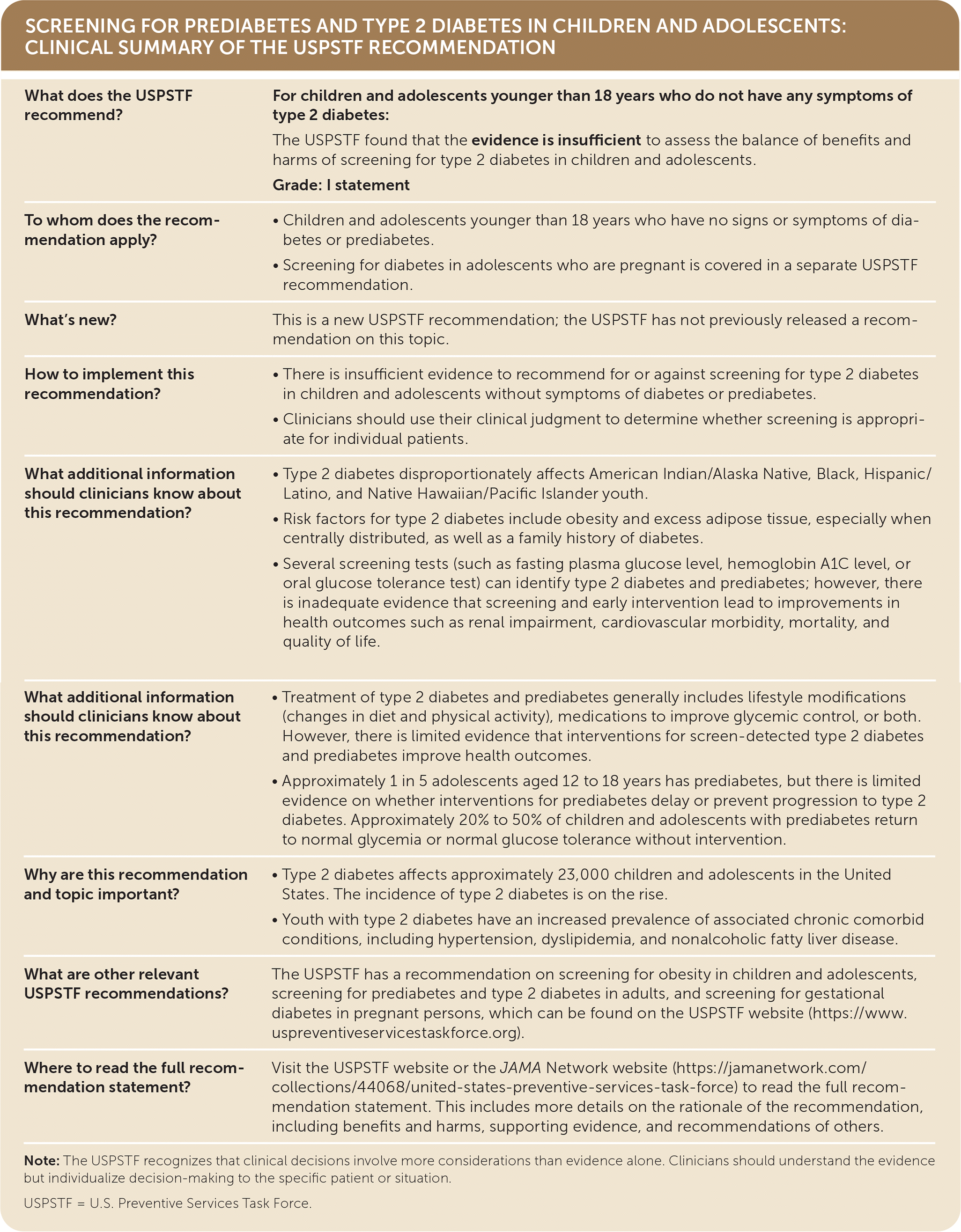
Am Fam Physician. 2023;107(1):online
Related Putting Prevention Into Practice: Screening for Prediabetes and Type 2 Diabetes in Children and Adolescents
As published by the USPSTF.

| What does the USPSTF recommend? | For children and adolescents younger than 18 years who do not have any symptoms of type 2 diabetes: The USPSTF found that the evidence is insufficient to assess the balance of benefits and harms of screening for type 2 diabetes in children and adolescents. Grade: I statement |
| To whom does the recommendation apply? |
|
| What's new? | This is a new USPSTF recommendation; the USPSTF has not previously released a recommendation on this topic. |
| How to implement this recommendation? |
|
| What additional information should clinicians know about this recommendation? |
|
| What additional information should clinicians know about this recommendation? |
|
| Why are this recommendation and topic important? |
|
| What are other relevant USPSTF recommendations? | The USPSTF has a recommendation on screening for obesity in children and adolescents, screening for prediabetes and type 2 diabetes in adults, and screening for gestational diabetes in pregnant persons, which can be found on the USPSTF website (https://www.uspreventiveservicestaskforce.org). |
| Where to read the full recommendation statement? | Visit the USPSTF website or the JAMA Network website (https://jamanetwork.com/collections/44068/united-states-preventive-services-task-force) to read the full recommendation statement. This includes more details on the rationale of the recommendation, including benefits and harms, supporting evidence, and recommendations of others. |
The full recommendation statement is available at https://www.uspreventiveservicestaskforce.org/uspstf/recommendation/prediabetes-type2-diabetes-children-adolescents-screening.
The USPSTF recommendations are independent of the U.S. government. They do not represent the views of the Agency for Healthcare Research and Quality, the U.S. Department of Health and Human Services, or the U.S. Public Health Service.
